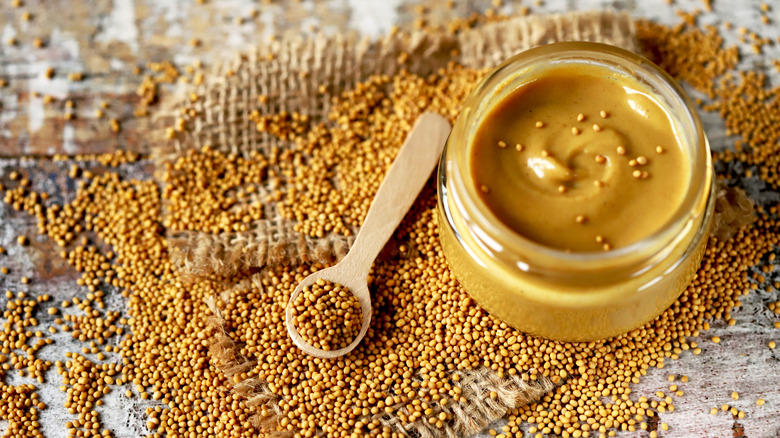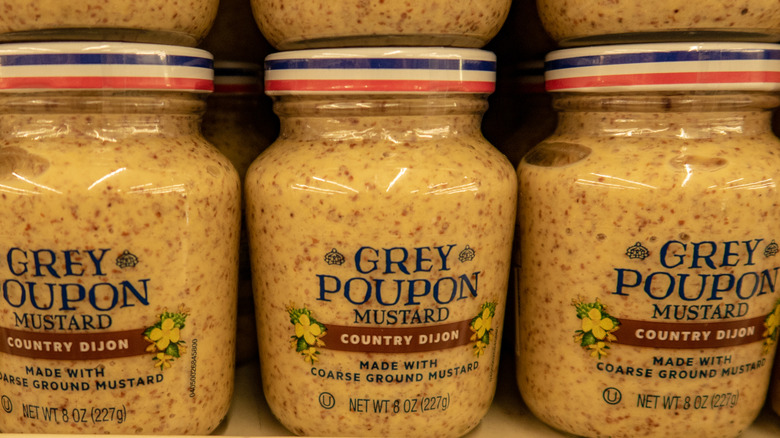The Uncommon Ingredient Originally Used In Dijon Mustard
When it's summertime, mustard has its heyday. Ketchup's yellow counterpart goes great on hot dogs ... and even works as an unexpected mix-in to spiced lemonade. A versatile condiment, mustard comes in all shades and sizes. Picking your next jar is therefore mostly a matter of personal preference.
Although standard yellow mustard serves as the all-American underscore to everything from burgers to hot dogs, the French versions are not to be discounted. As the name suggests, Dijon mustard originated in Dijon, France. Sharp and distinct, Dijon comes in both textured and smooth versions. Perhaps the most well-known Dijon on grocery store shelves is Grey Poupon, according to MasterClass.
Right now, Dijon — as well as mustard at large — is an in-demand commodity. According to USA Today, Europe is experiencing mustard shortages thanks to a combination of climate change and the Russia-Ukraine conflict. Consequently, Dijon is expected to become more expensive.
As mustard prices and products fluctuate in both France and America, it's time to look back at an eternal classic. One signature ingredient has historically defined Dijon, setting it apart from other popular types on the shelves.
Verjuice is the secret hero in traditional Dijon
Original Dijon recipes called for the addition of verjuice, per Serious Eats. Often used in lieu of vinegar or lemon, verjuice is commonly made with unripe grapes. However, the term historically includes any unripe sour fruit, like apples and plums (via The Spruce Eats).
As for how verjuice affects the flavor of Dijon, it's all about the acidity. Compared to more common forms of acid, verjuice is milder — and responsible for Dijon's rich-hot flavor. According to Serious Eats, verjuice is less acidic than other common acids, and therefore less likely to interfere with the heat from mustard seeds.
Yet while verjuice was a staple in old-school Dijon, it is no longer a common ingredient. Contemporary recipes instead incorporate the likes of vinegar or white wine. Taste of Home's recipe for Dijon actually utilizes a combination of both. Creating the perfect Dijon therefore depends on an interplay of ingredients.
Beyond its shift away from verjuice, Dijon has similarly strayed from its place of origin. The mustard is no longer made exclusively in France; rather, any mustard made in the general style of Dijon's original recipe counts as Dijon (via Serious Eats). Such changes are the result of loose regulations surrounding the mustard's classification and identity, though traditionalists need not worry: Dijon has largely maintained its subdued yellow color. The mustard looks distinctive with or without verjuice.

